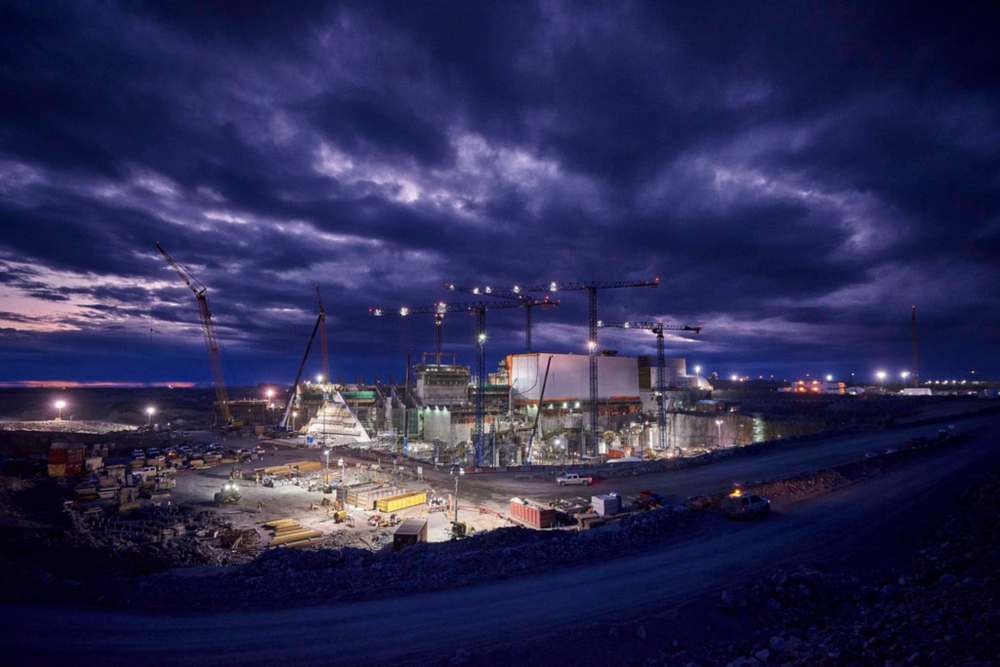Key details lacking in Keeyask outbreak
Advertisement
Read this article for free:
or
Already have an account? Log in here »
To continue reading, please subscribe:
Monthly Digital Subscription
$0 for the first 4 weeks*
- Enjoy unlimited reading on winnipegfreepress.com
- Read the E-Edition, our digital replica newspaper
- Access News Break, our award-winning app
- Play interactive puzzles
*No charge for 4 weeks then price increases to the regular rate of $19.00 plus GST every four weeks. Offer available to new and qualified returning subscribers only. Cancel any time.
Monthly Digital Subscription
$4.75/week*
- Enjoy unlimited reading on winnipegfreepress.com
- Read the E-Edition, our digital replica newspaper
- Access News Break, our award-winning app
- Play interactive puzzles
*Billed as $19 plus GST every four weeks. Cancel any time.
To continue reading, please subscribe:
Add Free Press access to your Brandon Sun subscription for only an additional
$1 for the first 4 weeks*
*Your next subscription payment will increase by $1.00 and you will be charged $16.99 plus GST for four weeks. After four weeks, your payment will increase to $23.99 plus GST every four weeks.
Read unlimited articles for free today:
or
Already have an account? Log in here »
Hey there, time traveller!
This article was published 02/11/2020 (1864 days ago), so information in it may no longer be current.
Manitoba Hydro and provincial officials are leaving vulnerable First Nations in the dark about a COVID-19 outbreak that has put 125 workers at the Keeyask megaproject into isolation.
Meanwhile, in a letter obtained by the Free Press, the top doctor for northern Manitoba said the outbreak can traced to a week before Hydro closed its on-site gym and bar.
“They’re not telling the truth of what’s happening at Keeyask,” Tataskweyak Cree Nation Chief Doreen Spence said after a two-hour Monday phone call with Hydro chief executive officer Jay Grewal and provincial officials.

“Everybody should be worried.”
Spence is exasperated Hydro would not boost screening of employees coming from Winnipeg as the city’s case count exploded in mid-October, while health officials have asked other chiefs not to tell band members about presumptive-positive cases.
“We’re not even given all the facts of what’s happening, and we’re taking on the role of providing information to everybody,” Spence said.
Hydro and the Northern Regional Health authority would not provide anyone for an interview Monday.
“Like the rest of the province, our plans are adjusted as the overall situation with the pandemic changes and as the severity of spread changes,” Hydro spokesman Bruce Owen wrote, adding this is guided by public health officials.
Keeyask generating station is a partnership with four First Nations, who have numerous band members working on the site on the lower Nelson River, some 725 kilometres northeast of Winnipeg.
The four chiefs have been concerned for months about workers outside of Manitoba entering the site. In May, the bands blockaded access roads, until Hydro agreed to improve its protocols for out-of-province workers.
Hydro detected a case at the site Oct. 25, and closed its on-site gym and bar Oct. 27.
On Saturday, Hydro tested all 713 workers at the site.
The utility said its private lab found 16 positives, while another 15 got a “not clear” result. They’re among the 90 workers in isolation at the plant, while another 35 are self-isolating elsewhere.
In a Sunday letter obtained by the Free Press, Dr. Michael Isaac urged Hydro to “review and strengthen” its protocol for working in small groups and the system for tracking where employees sit on company buses.
Isaac, medical officer of health for the Northern Regional Health Authority, told Hydro anyone who left the Keeyask site as far back as Oct. 20 must be told to self-isolate.
Numerous Keeyask employees say the COVID-19 outbreak has been traced to a contractor who lives in Winnipeg.
This summer, Hydro stopped requiring Manitobans flying to the Keeyask site to be tested before starting work. When Winnipeg entered code orange Sept. 28, Keeyask workers coming from the city had their temperatures taken twice a day.
The utility did not boost its protocols in mid-October, when Winnipeg recorded one of the highest case-positivity and growth rates in Canada. Instead, on Oct. 26, Keeyask asked all Winnipeggers fill out self-monitoring questionnaires for their first two weeks on-site.
Between the first case emerging Oct. 25 and Hydro testing all employees Oct. 31, numerous contractors left the site for Winnipeg and The Pas.
Meanwhile, NRHA officials have told chiefs about cases in their area but asked them not to inform anyone until results are confirmed and reported, which has taken as long as five days. It has left chiefs trying to inform band members to be extra cautious, without telling them why.
While contact tracers are tracking which cases are affiliated with the plant, the province will record them based on the patient’s home address listed on their Manitoba Health Card. For example, the Winnipeg contractor’s case will be logged as a WRHA case.
That makes it impossible for chiefs to know how many cases are actually in their region.
That’s unacceptable for the Assembly of Manitoba Chiefs, which said Hydro needs to be much more transparent with First Nations.
“They have been repeatedly denied this basic information to act quickly,” Grand Chief Arlen Dumas wrote Monday in a statement. “This has now, frustratingly, become a growing and uncontrolled outbreak. It is completely unacceptable.”
dylan.robertson@freepress.mb.ca







